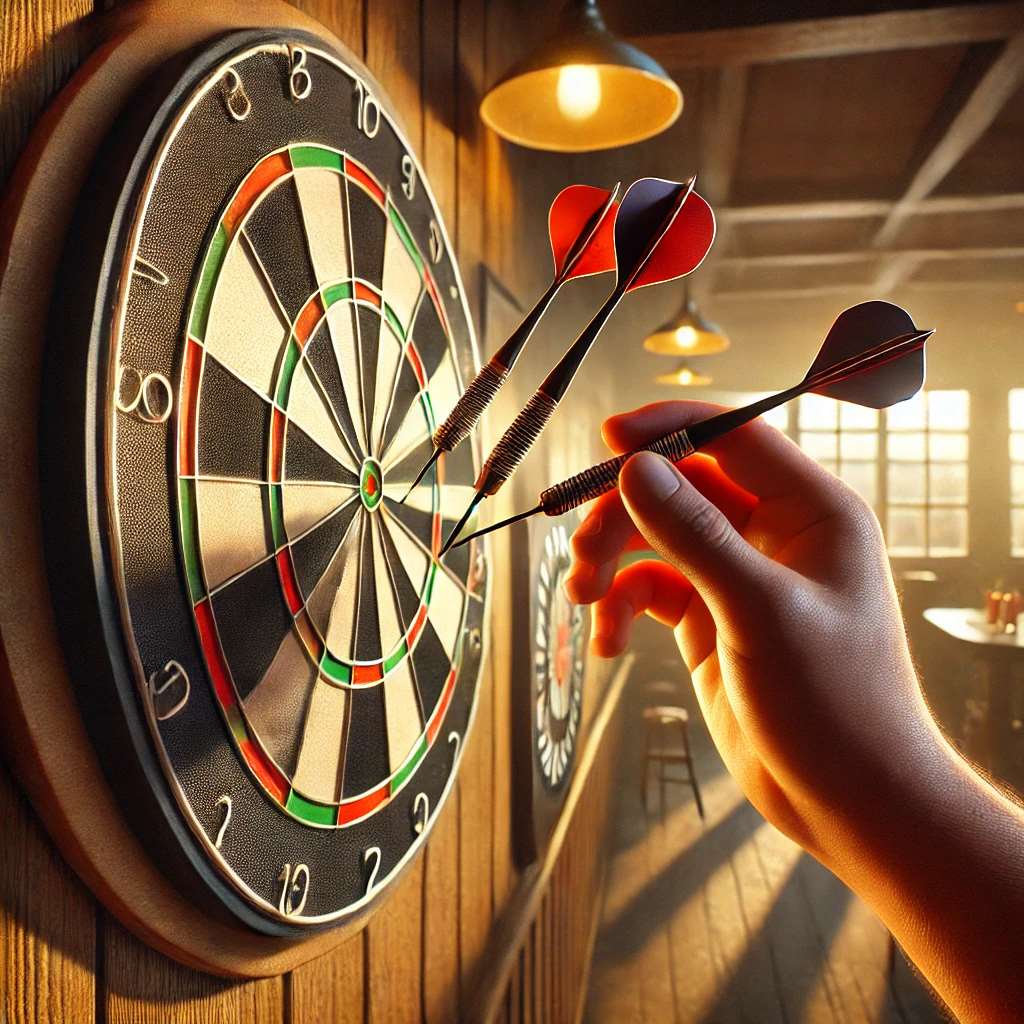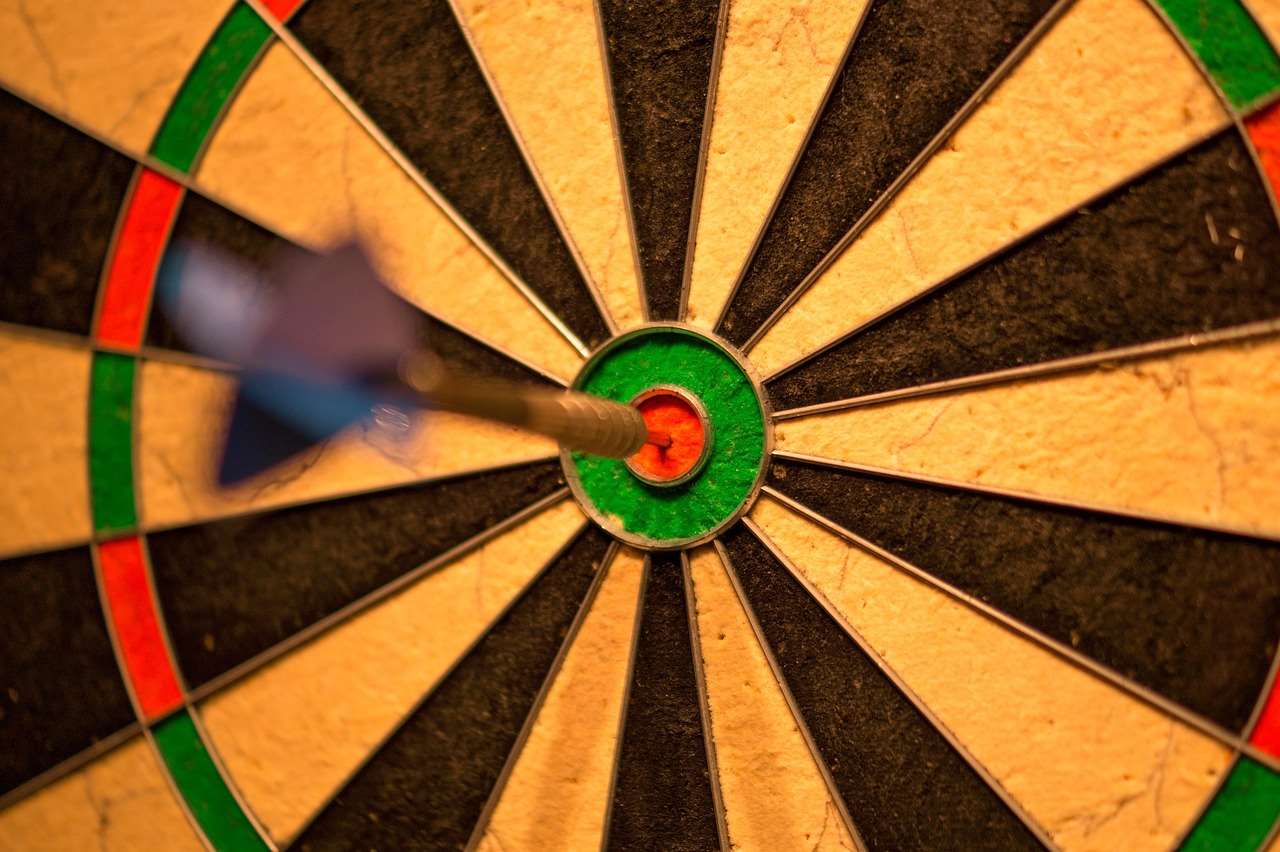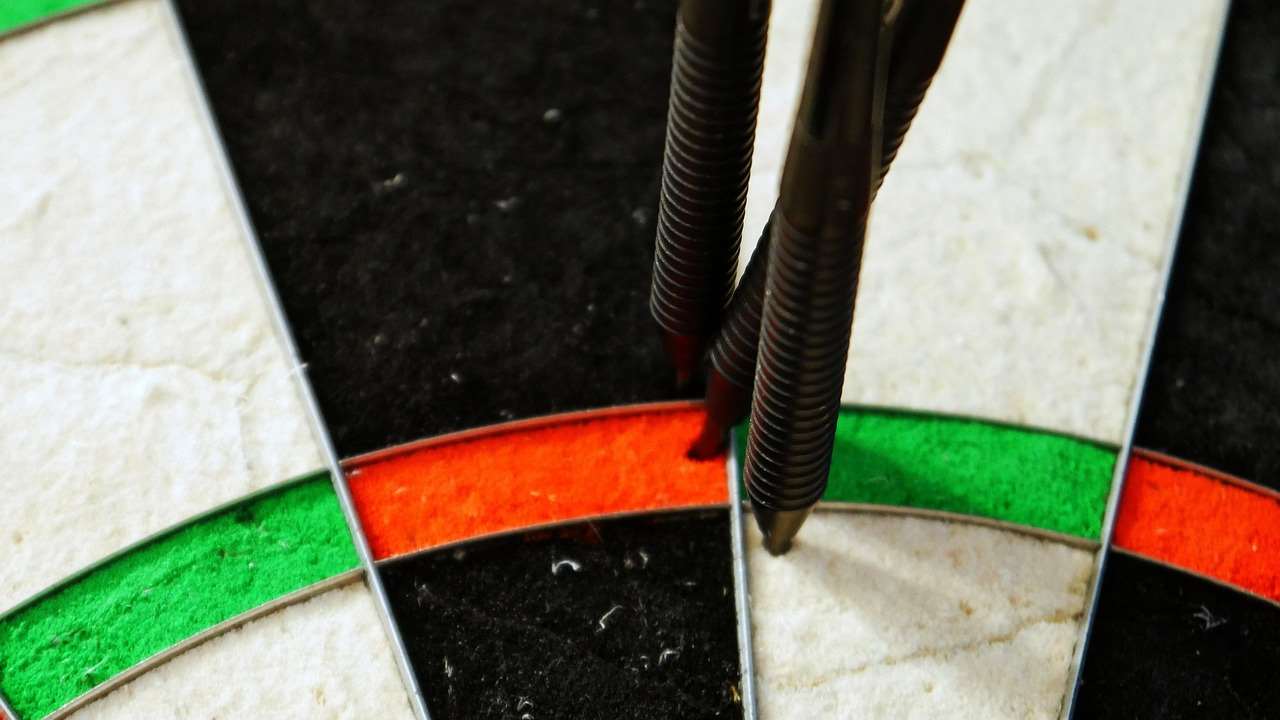Transform your dartboard into a miniature golf course! Customizing Golf darts rules fun variation is all about blending the precision of darts with the strategic gameplay of golf, and this article shows you how to create your own unique version. We’ll explore different hole layouts, scoring systems, and handicapping options to personalize the game for players of all skill levels.
⚠️ Still Using Pen & Paper (or a Chalkboard)?! ⚠️
Step into the future! The Dart Counter App handles all the scoring, suggests checkouts, and tracks your stats automatically. It's easier than you think!
Try the Smart Dart Counter App FREE!Ready for an upgrade? Click above!
Understanding the Basics of Golf Darts
Before we dive into customizing Golf darts rules fun variation, let’s establish the fundamental principles of the game. The core idea is simple: each section of the dartboard represents a portion of a golf course. You attempt to “play” each “hole” (dartboard segment) in the fewest darts possible, just like you would aim for the lowest score in a round of golf. Standard Golf Darts typically involves playing a specific sequence of numbered segments, aiming for the bullseye, doubles, or triples based on the chosen layout.
The standard game usually involves 9 or 18 holes, each defined by a specific target area on the dartboard. For instance, hole 1 might be the number 20, hole 2 the number 1, and so on. However, this is where the fun begins – you can completely redefine what constitutes a “hole” and how you score it.

Key Elements for Customization
There are several key elements that you can tweak when customizing Golf darts rules fun variation: hole selection, scoring system, handicap system, and penalty rules. Experimenting with these elements is key to creating a game that is both challenging and enjoyable for everyone involved. Consider the dart-playing abilities of your group when making these choices. A group of seasoned players will appreciate a more challenging layout and scoring system, while beginners might prefer a simpler approach.
Hole Selection and Layout
This is where your creativity can truly shine! Instead of sticking to the standard numbered segments, consider these options:
- Random Numbers: Assign each hole a random number on the board. This adds an element of chance and makes it less predictable.
- Sections and Multipliers: Incorporate single, double, and triple sections into the same hole. For example, hole 3 might be the single 15, the double 8, *and* the triple 3. Hitting *any* of those counts as completing the hole.
- Color-Coded Holes: Use the colors of the dartboard (black, white, green, red) to define the holes. For example, hole 5 could be “any black section” or “any green section.” This requires players to have good accuracy and precision.
- Bullseye Focus: Create holes that require hitting the outer or inner bullseye for varying scores. You can even make a hole require a specific number of bullseyes!
Refining Your Course Layout
Think about the **flow of your “golf course”** on the dartboard. Are you aiming for a challenging course with difficult shots, or a more forgiving one? Mix up the types of holes to create a well-rounded and engaging experience. You can even name each hole after a real golf course! When deciding how to structure your course, think about how you can challenge and reward players while ensuring everyone has a fair chance to score well.
Different Scoring Systems
The traditional Golf Darts scoring mirrors golf: lower is better. But, let’s explore some interesting variations:
- Standard Stroke Play: Count the number of darts it takes to complete each hole. Add up the strokes for all holes, and the lowest score wins. This is a straightforward and familiar system.
- Par System: Assign a “par” (expected number of darts) for each hole based on its difficulty. Award scores based on how many darts *over* or *under* par a player completes the hole in. For example, if a hole has a par of 3, and you complete it in 2 darts, you score -1. Completing it in 4 darts results in a score of +1. The lowest *total* score (positive or negative) wins.
- Points-Based System: Award points based on how close a player gets to the target on each throw. For example, hitting the target on the first dart earns 3 points, the second dart earns 2 points, and the third dart earns 1 point. Misses earn 0 points. The highest score wins. This adds a level of reward for accuracy, even if the hole isn’t completed in the fewest possible darts.
- Handicap Adjusted Stroke Play: After a few rounds, you can implement a handicap system to level the playing field. Darts Variants Fun Games, including golf darts, benefit greatly from this type of personalization.
Example Scoring System
Let’s say you’re using a par system, and Hole #1 (single 20) has a par of 2. Here’s how scoring would work:
- 1 Dart: -1
- 2 Darts: 0
- 3 Darts: +1
A more creative system could even involve bonus points for hitting specific sections (e.g., a triple 20 on Hole #1 gives you an additional -1).

Implementing Handicaps
To make the game fair and competitive for players of all skill levels, consider implementing a handicap system. This is crucial when customizing Golf darts rules fun variation, as it allows less experienced players to compete on an even playing field. This allows for **fun dart game variations** for mixed skill groups.
- Average Score Based: Calculate each player’s average score over a few rounds. The difference between a player’s average and the best average becomes their handicap. This handicap is then subtracted from their score at the end of the game.
- “Gimme” Darts: Give less experienced players a certain number of “gimme” darts per round. They can use these darts to automatically complete a hole if they are struggling.
- Target Size Adjustment: For less skilled players, slightly enlarge the target area. For example, instead of requiring a direct hit on the single 20, allow them to hit any part of the 20 section.
Penalty Rules and Obstacles
Add some extra challenge and excitement by introducing penalty rules, simulating the hazards found on a real golf course. Consider the following:
- “Water Hazard”: Missing the board entirely results in a one-stroke penalty.
- “Sand Trap”: Hitting a specific section of the board (e.g., the outer bullseye) results in a penalty stroke and possibly a move to a different “hole” (predetermined section).
- “Out of Bounds”: Hitting the wire around the board results in a two-stroke penalty and replaying the hole.
These penalties add an element of risk-reward to each throw, forcing players to think strategically about their shots. They can greatly impact the flow of the game and generate fun moments of tension and excitement.
Advanced Customization: Themed Games and Challenges
To take your customizing Golf darts rules fun variation to the next level, consider these advanced options:
- Themed Courses: Create courses based on real-world golf courses or even fictional locations. Adjust the hole layouts and penalties to match the characteristics of the theme.
- Team Play: Divide players into teams and alternate shots on each hole. This promotes teamwork and adds a social element to the game.
- “Closest to the Pin” Challenges: Introduce side challenges where players aim for specific targets on the board for extra points or prizes.
- Adding Extra Darts Fun Games: Incorporate elements from other dart games, like cricket darts, into your golf darts setup.
When creating a themed course, think about the story you want to tell. Does your course simulate a challenging mountain course with narrow fairways (small target areas) and deep bunkers (severe penalties)? Or is it a more forgiving links-style course with wide fairways (larger target areas) and fewer hazards? English Cricket darts rules share a similar customizable gameplay, although with much different objectives.

Example Golf Darts Course: “The Dartboard National”
Here’s a sample 9-hole course layout to inspire your own creations:
- Hole 1 (Par 3): Single 20
- Hole 2 (Par 4): Single 1 (Water Hazard: Miss the board)
- Hole 3 (Par 3): Double 16
- Hole 4 (Par 5): Single 19 (Sand Trap: Outer Bullseye – Move back to Hole 3)
- Hole 5 (Par 3): Triple 20
- Hole 6 (Par 4): Single 7
- Hole 7 (Par 3): Inner Bullseye
- Hole 8 (Par 4): Single 15
- Hole 9 (Par 5): Any Black Section
This example includes a mix of easy and challenging holes, as well as a “water hazard” and a “sand trap” to keep things interesting. Remember, the best course layouts are those that are tailored to the skill level and preferences of the players.
Documenting and Refining Your Rules
Once you’ve created your customized Golf Darts rules, it’s important to document them clearly and concisely. This will prevent confusion and ensure that everyone is on the same page. Write down the hole layout, scoring system, handicap rules, and penalty rules. Share these rules with all players before the game begins. After a few rounds, gather feedback from the players and make adjustments as needed. This iterative process will help you refine your rules and create the perfect Golf Darts experience.

Benefits of Customizing Golf Darts
Customizing Golf darts rules fun variation offers numerous benefits:
- Increased Engagement: Tailored rules keep players more engaged and invested in the game.
- Skill Development: Varied hole layouts challenge players to improve their accuracy and strategy.
- Enhanced Fun: Unique scoring systems and penalties add excitement and laughter to the game.
- Inclusivity: Handicap systems allow players of all skill levels to participate and compete fairly.
By taking the time to customize the rules, you can transform a simple dart game into a truly memorable and enjoyable experience for everyone involved. How play English Cricket darts differs from Golf darts, but like Golf, it can be heavily customized.
Tips for a Successful Golf Darts Game
Here are some final tips to ensure a successful and enjoyable Golf Darts game:
- Clear Communication: Clearly explain the rules to everyone before starting the game.
- Fair Play: Enforce the rules consistently and fairly.
- Positive Atmosphere: Encourage a friendly and supportive atmosphere.
- Flexibility: Be willing to adjust the rules if needed.
- Have Fun!: Remember that the primary goal is to have fun and enjoy the company of friends and family.

Conclusion
Customizing Golf darts rules fun variation is a fantastic way to add a unique twist to a classic game. By experimenting with hole selection, scoring systems, handicaps, and penalty rules, you can create a personalized experience that is both challenging and enjoyable for players of all skill levels. So, gather your friends, grab your darts, and get ready to tee off on your own customized dartboard golf course! Why not start brainstorming right now about how you can create your own golf dart course and rules? Share this article with your dart-playing friends and challenge them to a round of customized Golf Darts!
Hi, I’m Dieter, and I created Dartcounter (Dartcounterapp.com). My motivation wasn’t being a darts expert – quite the opposite! When I first started playing, I loved the game but found keeping accurate scores and tracking stats difficult and distracting.
I figured I couldn’t be the only one struggling with this. So, I decided to build a solution: an easy-to-use application that everyone, no matter their experience level, could use to manage scoring effortlessly.
My goal for Dartcounter was simple: let the app handle the numbers – the scoring, the averages, the stats, even checkout suggestions – so players could focus purely on their throw and enjoying the game. It began as a way to solve my own beginner’s problem, and I’m thrilled it has grown into a helpful tool for the wider darts community.